
Facebook is an undeniable force in the world of online marketing. According to data experts at Statista, Facebook’s global advertising operations generated $55 billion in revenue in 2018. Facebook’s success in advertising can be attributed to its business model: allow advertisers to connect with their target demographic on a personal level, using ads that help them achieve their business goals. You can also often find the right Facebook advertising agency for you that’ll maximize your results.
To improve the quality and performance of its ad platform, Facebook often issues updates. In August 2019, Facebook rolled out and tested 12 different updates to its advertising options, products, and tools. This overview contains all the information needed to evaluate the new changes and tests implemented last month.
Table of Contents
Customized Video Feed Ads
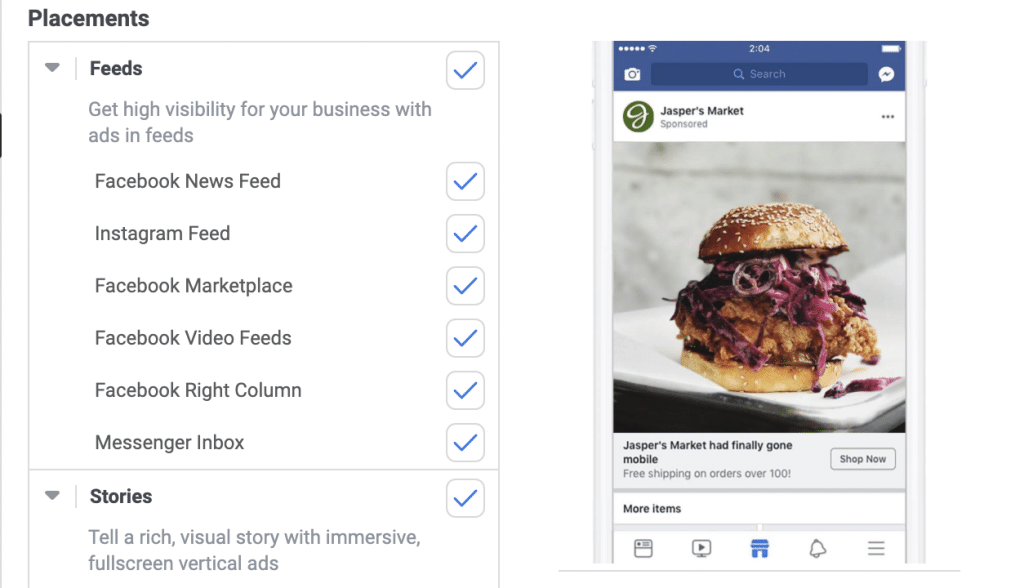
The internet has completely changed the way advertising works. Traditionally, television ads have been the standard way to use video in marketing. In the age of the internet, however, online videos rule. Modern shoppers are abandoning their television sets and cable TV service in favor of streamable, on-demand content that specifically fits their interests. In 2015, a Google survey found that people aged 18 to 49 were spending 4 percent less time watching shows on television. At the same time, this demographic increased their YouTube viewing hours by 74 percent. This trend indicates the profound power of online video to communicate with potential customers.
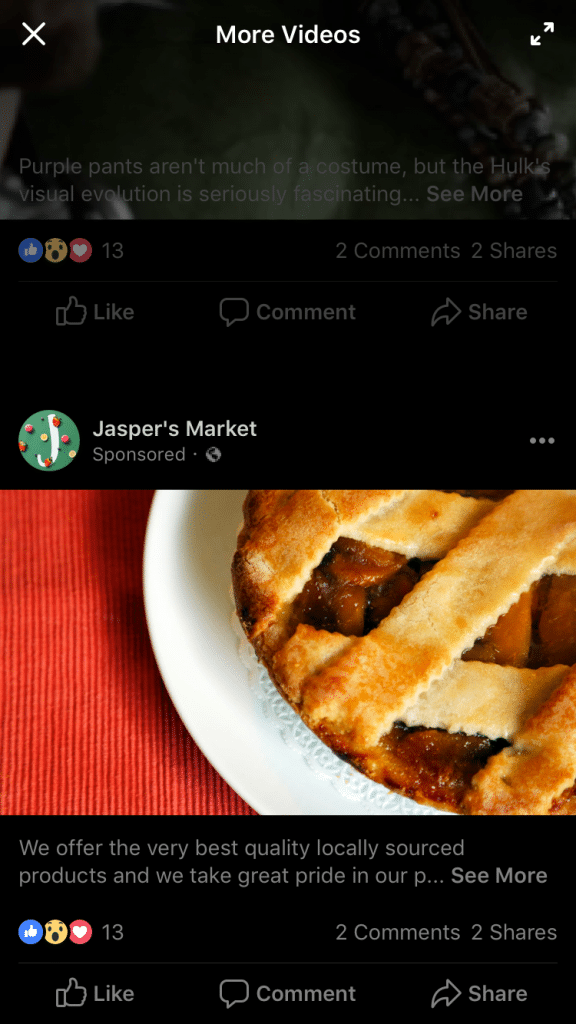
One of the August 2019 Facebook updates allows advertisers to take advantage of the popularity of online video. Advertisers can insert their video in users’ Suggested Video and Facebook Watch feeds. The video advertisement appears in between auto-played videos from independent content creators. Video ads with the objectives brand awareness, app installs, engagement, video views, reach, website conversions, or traffic are eligible for placement on the Suggested video and Facebook Watch feeds.
Simplified Targeting Options
The detailed targeting tool lets advertisers select qualities and attributes that define their ideal demographic. In the audience section of the Ads Manager interface, marketers can click off the interests, behaviors, and characteristics of those they think are most likely to buy their products and services. In August 2019, the long list of options was reduced. While existing ads will continue to run on established parameters through January 14, 2020, newly created campaigns will have a shorter list of applicable options.
Redesigned Business Manager
The Facebook Business Manager interface is the dashboard that allows advertisers to access their advertising assets. Advertisers use this tool to track campaign performance, create ads, and manage the financial details of their accounts. In August 2019, Facebook upgraded Business Manager to include features aimed at security, efficiency, and convenience.
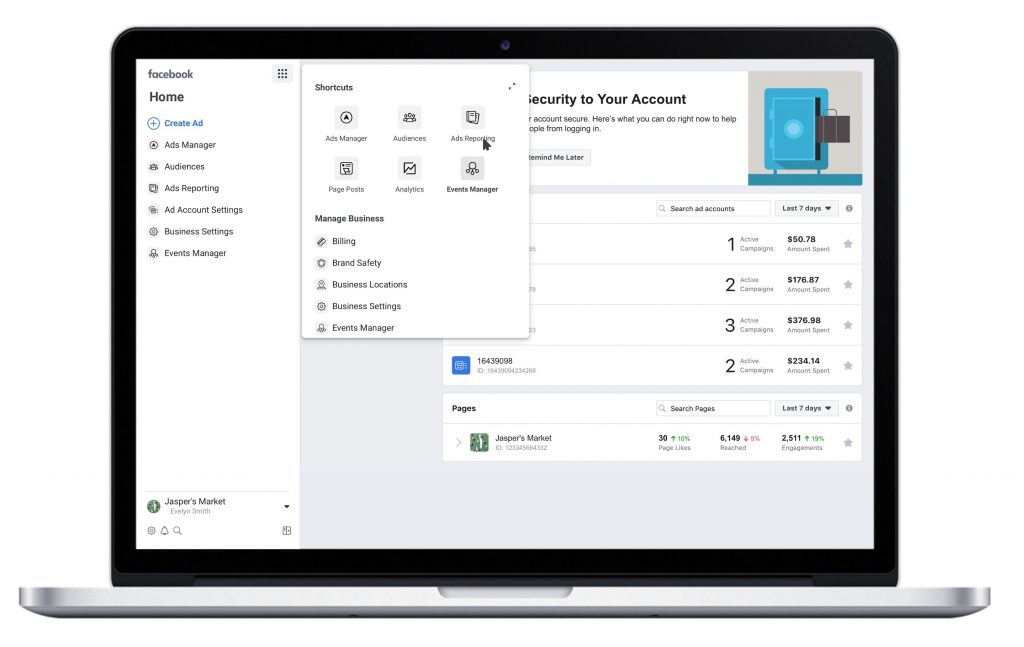
One of the updates includes a new shortcut bar, a dynamic tool that offers suggested links based on the advertiser’s past activities. Another new feature is an ad creation tool prominently displayed so advertisers don’t waste time when they want to build an ad. Asset groups is another new capability for the interface, which allows advertisers to arrange employees and contractors into business asset groups with customized access to pixels, pages, ad accounts, and other advertising assets.
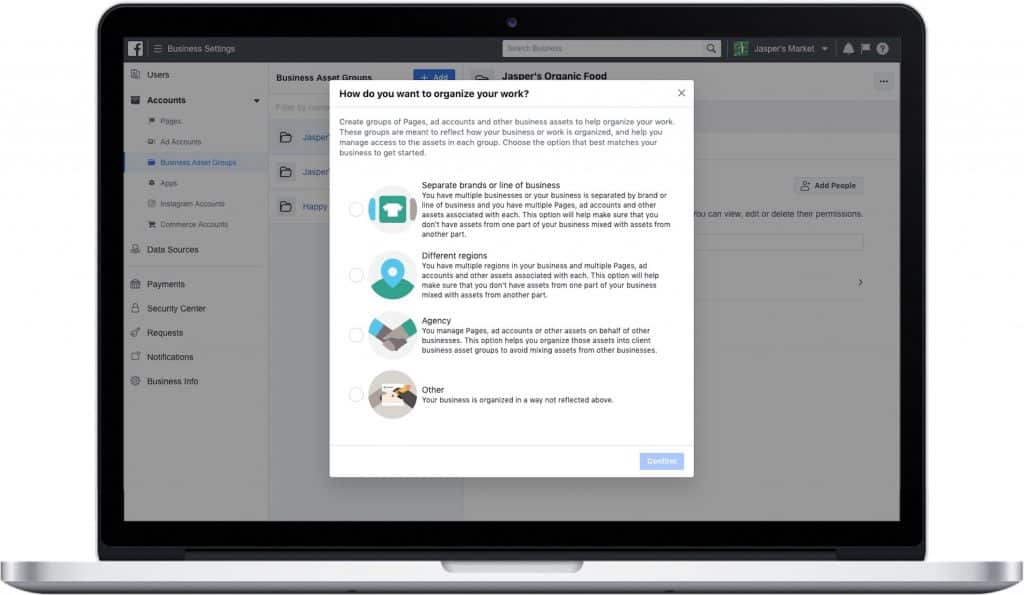
The updated Business Manager also includes a new tool that allows advertisers to view all of the important details on their associated partnerships, including shared assets and group members, from one easy-to-navigate location.
Facebook Posts in Messenger Stories
Currently, advertisers can use their existing posts to create an ad for Facebook Stories in Ads Manager. The only drawback to this capability is user engagement. If potential customers don’t click on the Stories icon, they won’t see the advertisements.
Spark AR for Instagram Users
Augmented reality (AR) is a growing force in the world of marketing and technology. According to data experts at Statista, AR revenue will reach $16.8 billion in 2019. Augmented reality allows users to enhance photos and videos with special effects that attract attention, increase emotional impact, and encourage audience engagement.
Facebook’s Spark AR interface now allows Instagram users to take advantage of augmented reality without the need for advanced technical knowledge or skills. This easy-to-navigate program lets creators apply pre-made effects and filters to their original content. The impressive selection of available effects includes work from budding graphic artists and professional designers that can be customized to fit any message or intent.
In-Feed Movie and Showtime Reminders
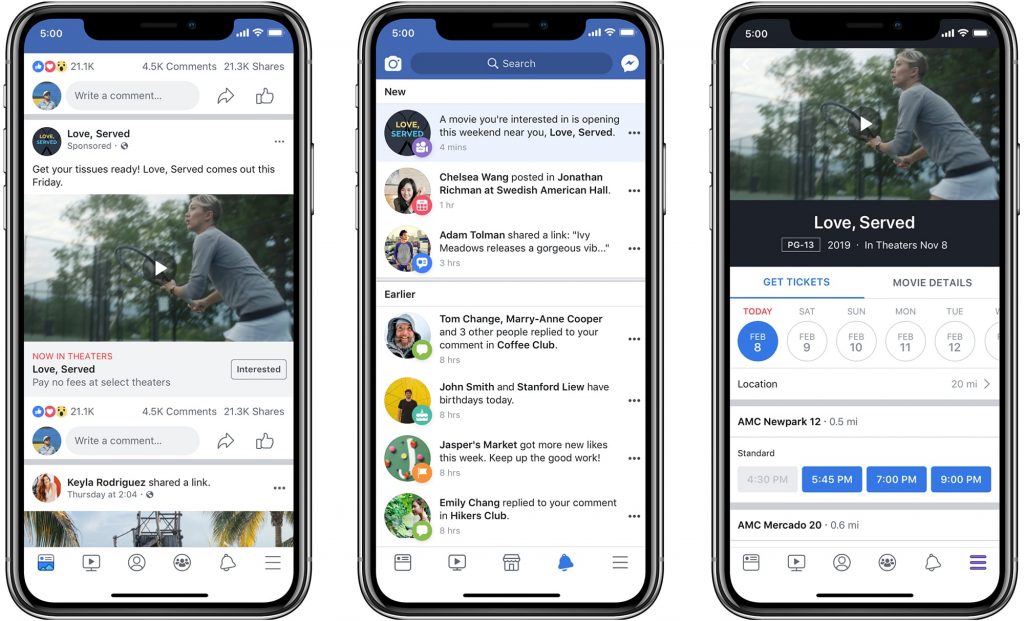
For big media events, promotions generally start early. Teaser posts and short videos arouse interest and build anticipation for the final release. In today’s online environment, however, many users quickly forget about that exciting trailer or enticing post long before the release date. The in-feed movie and showtime reminder is a new function that allows users to receive messages as the date approaches. Viewers that selected the “Interested” icon in their display ads receive release updates when their shows are available in theaters.
Slideshows to Facebook Stories
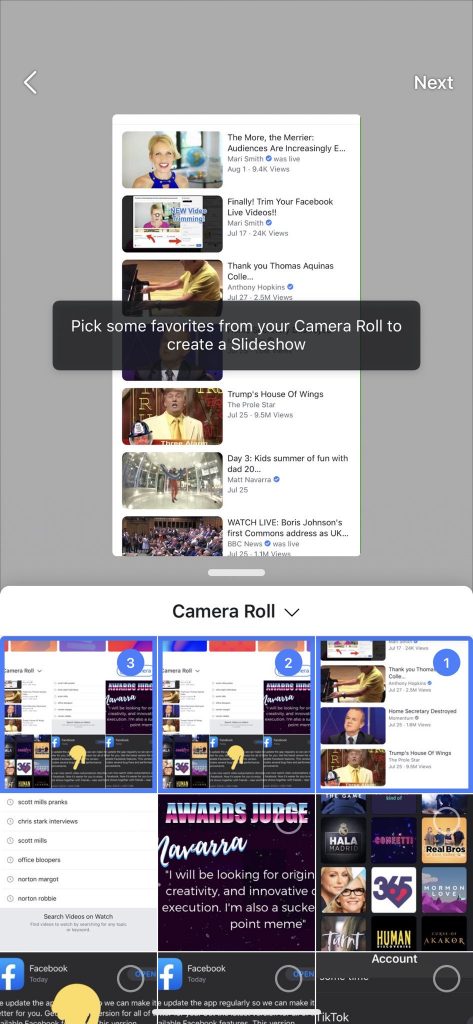
As of August 2019, users have an easier way to create slideshows in their Stories. Before the update, users had to create each frame separately. The time it took to add pictures, effects, and text limited their ability to keep Stories content fresh. Users can now choose multiple images at once. This simple capability shortens the amount of time they need to update their Stories, which helps them keep their brand in front of their target audience with relevant and interesting content.
Simplified Privacy Settings for Facebook Groups
Groups is another important tool in an online marketer’s arsenal. Social media followers who join groups are further along in the conversion process. For some marketers, a private Facebook group can be offered as a perk that adds value to a completed purchase. Offering exclusive content or access to experts makes buyers feel more appreciated, which makes them more likely to recommend products or purchase again.
Previously, Facebook group creators had the option of setting their pages to public, closed, or secret. These choices often caused confusion for those who didn’t quite understand the limitations of each option. In August 2019, Facebook simplified the selections to include only public and private options. The exclusion of the secret option makes it easier for group facilitators to understand what kind of information can be accessed from outside the discussion page.
Clear History Tool in Three Countries
Part of Facebook’s power lies in its tracking capabilities. Through the use of cookies and other tracking tools, Facebook is able to gather invaluable data about the habits, interests, and choices of its users. However, the company has been under fire recently for potentially illegal privacy breaches related to its data collection efforts. Users are now demanding more control over the information the social media giant is allowed to collect.
In an effort to address these concerns, Facebook began testing a feature that allows users to keep their social media use separate from their other online activities. The Clear History tool allows users to manually limit the data that Facebook collects by disassociating their personal information from the acquired data. In August 2019, testing began in Spain, South Korea, and Ireland. These changes may compromise marketers’ ability to obtain high-quality results from targeted ads.
Facebook Ads in Search
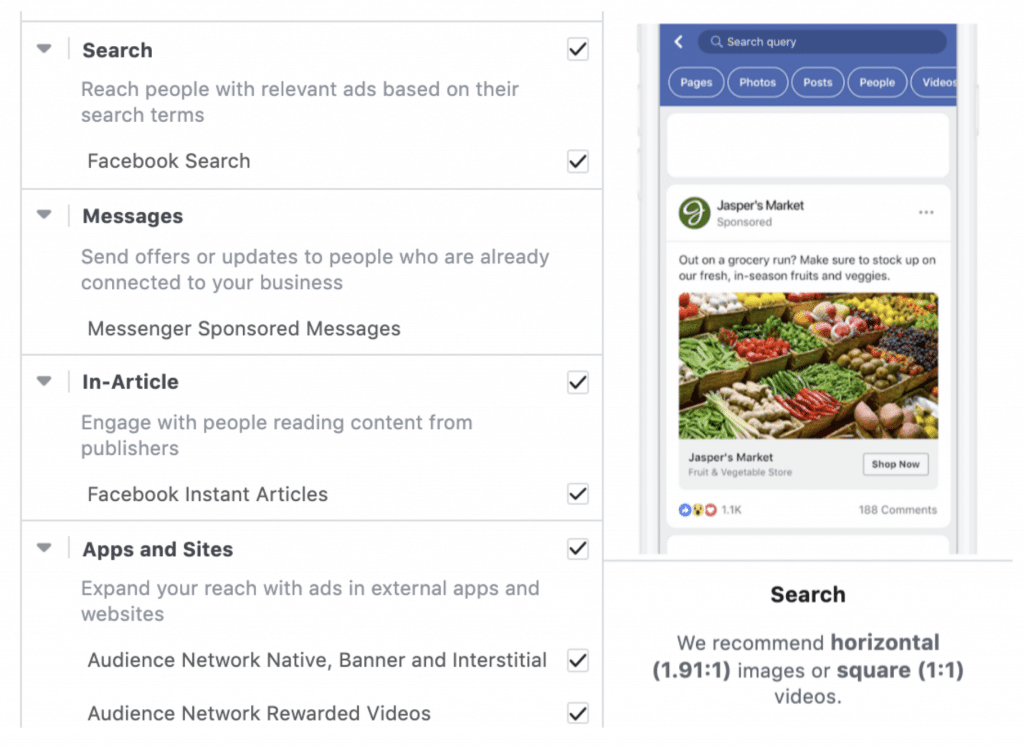
Facebook’s dedicated search engine makes it easy for users to quickly find the information they need. However, advertisements were not previously included in their searchable database. Facebook marketer Jon Loomer spotted a test last month that showed “search” as a placement option that allows marketers to include their ads in search results. When a potential client enters a relevant phrase or keyword, related advertisements are displayed alongside other results. These ads can be focused on Marketplace results only or applied to site-wide inquiries.
Introduction of Threads Messaging App
In an attempt to further their domination of the social media market, Facebook is developing a standalone messaging application called Threads. Intended as a direct rival for the popular platform Snapchat, the Threads app connects users’ Instagram accounts. Through the app, users can share information on their location, device, and even the speed that they’re currently traveling at alongside pictures, videos, and text. Close friends can easily keep in contact and share digital information privately. Official app development information was released in August 2019. However, the program is still undergoing internal testing with no tentative release date provided.
Instagram IGTV Integration with Facebook Watch
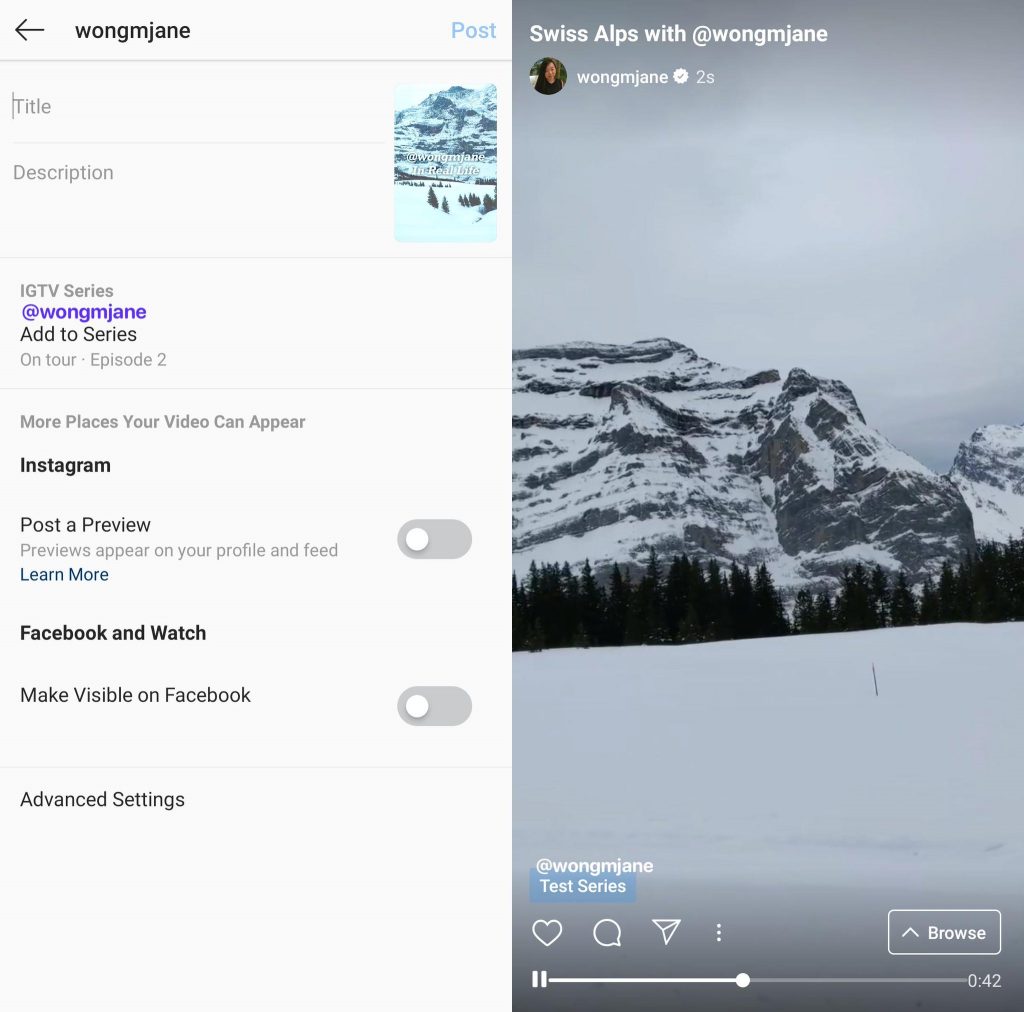
In August, reverse software engineer Jane Manchun Wong discovered a feature that allows Instagram users to post their IGTV content to both Instagram and Facebook Watch. As shown in Wong’s screenshot, users can post to both platforms simultaneously by switching on the “make visible on Facebook” toggle button. According to Wong, the feature is still in the prototype stage. The buttons on the new feature are currently not functional.
Facebook is an important platform for any business owner that uses online marketing. These recent changes will affect the flow of business for these operations in the future. With the help of an experienced Facebook advertising agency, marketers can find the right strategies that make the most of these updates.
By Dee Guzman, contributing writer
